Robots worked with at the center.
Nao
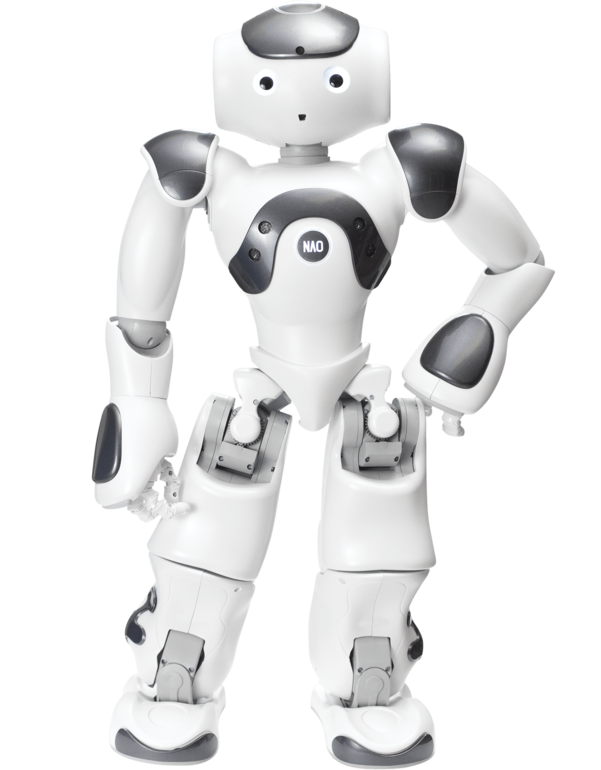
The Nao robot was initially created in 2005 with the goal of launching a robot with a human appearance and mechanical, electronic, and cognitive skills to the market, aiming to reach a broader audience at a more affordable price.
The purpose behind creating this humanoid robot is for Nao to integrate into the family and domestic environment, becoming just another member and contributing, in the same way as the other members, to household tasks.
The Nao robot features a platform through which additional or extra functions can be added via different applications. The latest version of this product, the most updated one, is the NAO6. This robot can, for example, serve as a companion to a diabetic child, and it is also commonly used and programmed in educational settings.
Characteristics of the Nao Robot
The NAO robot is designed for children aged 7 and up, covering early childhood education, basic, middle, and higher education. One of NAO’s main features is its ability to detect a person’s mood and express emotions such as sadness, joy, surprise, and fear.
Below are the advantages and benefits offered by Nao in its various uses:
-
Benefits of NAO in Education: Its use increases student participation, which directly contributes to achieving academic goals. It allows students to combine theory and practice in projects. It fosters teamwork, problem-solving, and skill development. It is especially useful in programming projects related to science, mathematics, technology, and robotics engineering.
-
Applications of NAO in Research: The humanoid robot provides a perfect testing platform for theoretical and conceptual models, as well as multilingual programming software that facilitates human-robot interaction.
-
Special Education Projects: It is aimed at working with autistic children and those with special needs, promoting interaction with children visually, verbally, and tactilely.
-
Use of NAO in Domestic Environments: It promotes learning robotics among children and older adults. At home, it can become just another family member, capable of telling stories, encouraging healthy habits, or simply monitoring the house.
-
Advantages of Its Use in Businesses: Having the most advanced technology allows companies to impress clients by offering a robot they can interact with. It can also be a tool to boost marketing projects within the company.
NAO Robot Programming Software
If you want to learn how to program the NAO robot, it is relatively easy and requires no prior programming knowledge. It includes software compatible with Windows, Linux, and MAC operating systems. It has a graphical programming tool, a simulation software, and an additional software development kit.
The software allows customization of the programming language to suit any user, whether a child or an adult. You can program using a drag-and-drop block system and also use advanced programming languages such as:
-
C++
-
Python
-
Java
-
MATLAB
Dimensions and Technical Features of Nao
Nao weighs 4.3 kg and is 58 centimeters tall, making it light and small in size — a perfect solution for coexisting with humans. Thanks to its hands with tactile sensor-equipped fingers, it can lift objects weighing up to 600 grams.
The various elements of NAO, such as sensors, motors, and software, are controlled by a powerful operating system called NAOqi.
It has WiFi capability and can be connected using WPA or WEP, suitable for use at the office or home. Nao has four microphones for communication, speaks 19 different languages, and can recognize sound from any angle. It has two detection cameras that allow it to identify objects in its surroundings. If it falls to the ground, it can get up by itself thanks to its articulated robotic arms.
NAO recognizes the people it talks to and can remember their names for several days. There are various versions of the Nao robot (the latest being V6 Standard) with up to 25 degrees of freedom. For example, the version used in RoboCup has up to 21 degrees of freedom without actuated hands. All versions have an inertial measurement unit with a gyroscope, accelerometer, and four ultrasound sensors, providing stability, while the leg versions include 8 force detection resistors and 2 stops.
Thanks to its multiple sensors, Nao can perceive its environment and interact with it. It has 25 degrees of freedom, giving it ideal freedom and autonomy to operate anywhere. This collaborative robot includes 4 microphones, 2 speakers, and 2 high-definition cameras.
Tiago
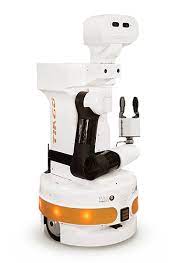
The TIAGo robot is a robot developed by the Spanish company PAL, created to assist elderly people with household tasks.
According to data from the National Institute of Statistics, 5 million Spanish citizens live alone, and the vast majority of them are over 65 years old, making the need for assistance at home evident.
In an era where technology and robotics are booming—and clearly these two fields will shape the future of our society—it seems logical to assume that there is no better alternative to help elderly people than the creation of a robot. For this reason, PAL, under an initiative by Eurostar, has developed the TIAGo robot.
Characteristics of the TIAGo Robot
TIAGo is a semi-humanoid robot capable of performing many tasks such as administering medication, carrying objects to elderly people, recommending healthy meals, providing recipe ideas, and monitoring vital signs, among many other functions. Additionally, it is a robot that recognizes faces and with which people can interact. Thanks to its multilingual capabilities, language will not be a barrier.
Many experts agree that this robot is key to the independence of elderly people, as it allows them to stay at home longer. With the help of the robot, the person can extend their stay at home without the need to move into a nursing home or care center.
| Technical Information | |
|---|---|
| Height: | 110-145 cm |
| Footprint: | ø 54 cm |
| Arm load capacity: | 3 kg (without end-effector) |
| Autonomy: | 4–5 hours (1 battery) / 8–10 hours (2 batteries) |
| Mounting points: | Head, laptop tray, and mobile base |
| Operating System: | Ubuntu LTS, Real Time OS |
Pepper
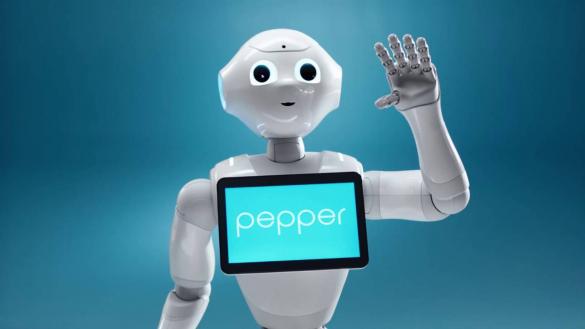
The Pepper Robot
Pepper is programmable and has a height of 120 centimeters. Its design is focused on interacting with people and includes technology that allows it to analyze verbal and non-verbal language, head position, and tone of voice.
Robot-Customer Communication
Thanks to its sensors, a 3D camera, and four microphones, Pepper can recognize people’s emotional states, gestures, sounds, and touch, creating an environment of empathy and connection that fosters smooth and effective communication between the robot and the customer.
Pepper is capable of very flexible movements, which it uses as body language during interactions, and it can also move at speeds of up to 3 km/h.
Tablet
Pepper comes with a touchscreen measuring 246 x 175 x 14.5 mm, with a resolution of 1280x800, located on its chest. It offers numerous possibilities for programming and configuring the robot and can also transmit and receive information thanks to its online connection.
Interaction
The features that define Pepper make this robot ideal for environments related to customer service. Some of the functions it can perform include:
-
Attracting customers’ attention
-
Presenting products and explaining their features
-
Providing customers with information about locations and services
-
Scanning coupons, cards, QR codes, EAN codes, etc.
-
Connecting and sharing data with CRM, ERP, online stores, corporate websites, and more
Programmable
This humanoid robot is ideal for beginners in robotic programming as well as a tool for research or developing new applications.
The programming systems supported by Pepper include:
-
Choreographe
-
Python
-
C++
-
Java
-
ROS
Technical Information
-
Weight: 28 kg
-
Height: 120 cm
-
Depth: 42.5 cm
-
Battery: Lithium, 30.0 Ah / 795 Wh
-
Autonomy: Up to 12 hours
-
Connectivity: Wi-Fi / Ethernet
-
Speed: More than 3 km/h
-
Motors: 20
-
Moving parts: Head (1), shoulders (2), elbows (2), wrists (2), fingers (10), hips (1), and knees (1)
-
Wheels: 3 (omnidirectional)
-
Movement: 360º
-
Tablet: LG CNS
Bioloid Robotics Premium
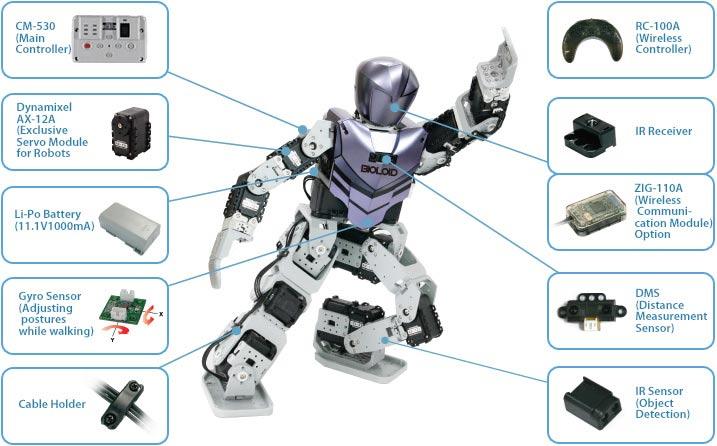
The Bioloid Premium Kit is the highest-performance humanoid robot available today. The new CM-530 is a much improved version compared to the CM-5 Bioloid Controller, featuring the new Robo-Plus software that combines the ease of use of block-style programming with logical programming. It uses the programming language 'C'. The 11.1V 3S LiPo batteries are not only lighter but provide a higher operating voltage, resulting in better performance and increased speed for the AX-12A Robot Servos.
The Bioloid Premium Kit brings all these features together with a new aesthetic design, providing one of the most functional and comprehensive humanoid robot kits on the market today.
Humanoid robots are not the only things you can build with this kit. The Bioloid system was designed from scratch to be fully modular; you can build and rebuild dozens of different robots. There are a total of 29 different robot examples, ranging from wheeled robots, hexapods, quadrupeds, robot arms, and multiple bipeds, including the high-level Bioloid Premium Humanoid variants.
Features:
-
Excellent human-like walking performance (posture can be adjusted while walking)
-
Includes several sensors such as gyroscope, distance range sensor, IR sensor, and external IO ports to add new devices
-
Remote control using Zigbee protocol
-
Programming in C with RoboPlus software via USB
-
Transparent skin for easy configuration
Zowi
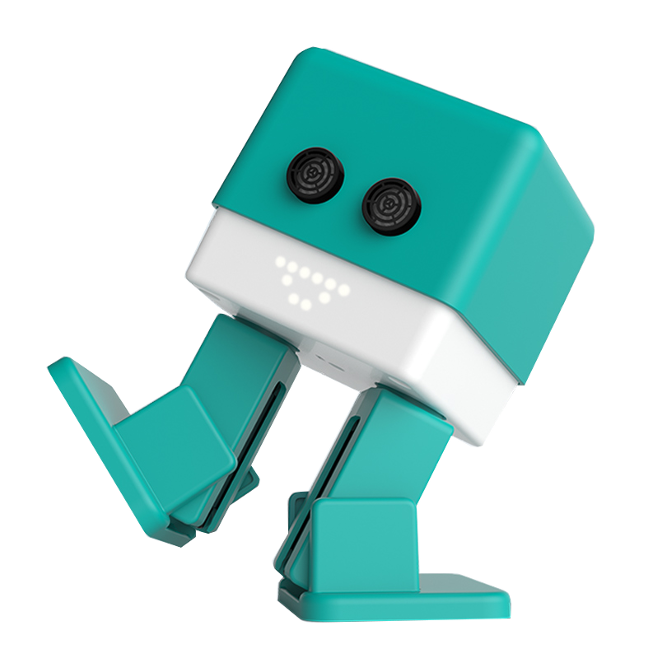
This charming robot has one purpose: to teach children that technology can be transparent, accessible, and fun. Beyond being a toy, it is also an educational ecosystem with a comprehensive learning path. Moreover, it is an open-source robot: the physical design, code, and app are available for anyone to understand and modify.
Zowi can communicate and be controlled via Bluetooth using the Zowi App.
By pressing the buttons located on its back, you can explore basic functions:
-
Dance: Zowi surprises with its original movements and dances, thanks to the 4 motors that drive it.
-
Walk and avoid obstacles: Zowi’s eyes are currently ultrasonic sensors.
-
Zowi has a microphone which it uses to listen to what is happening around it.
